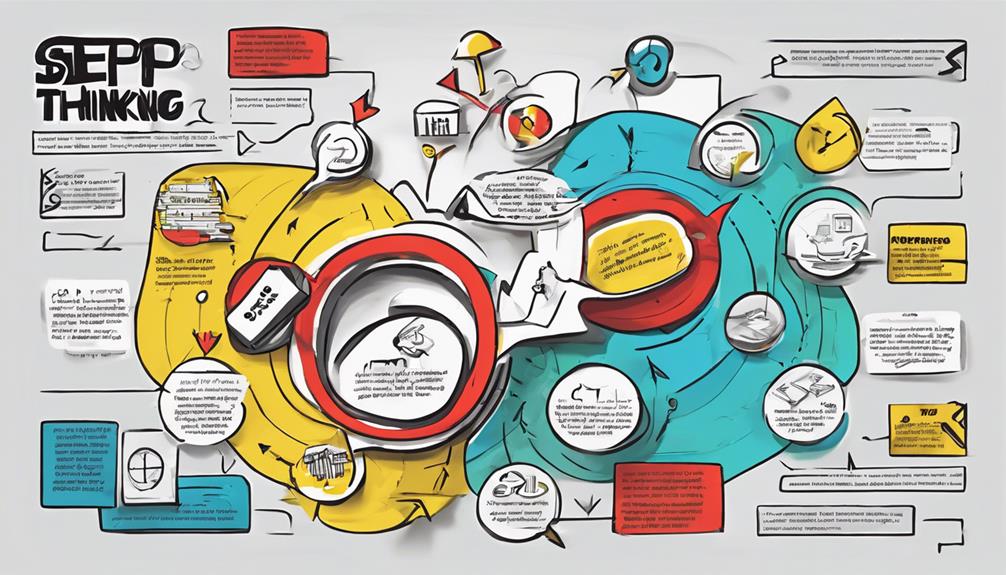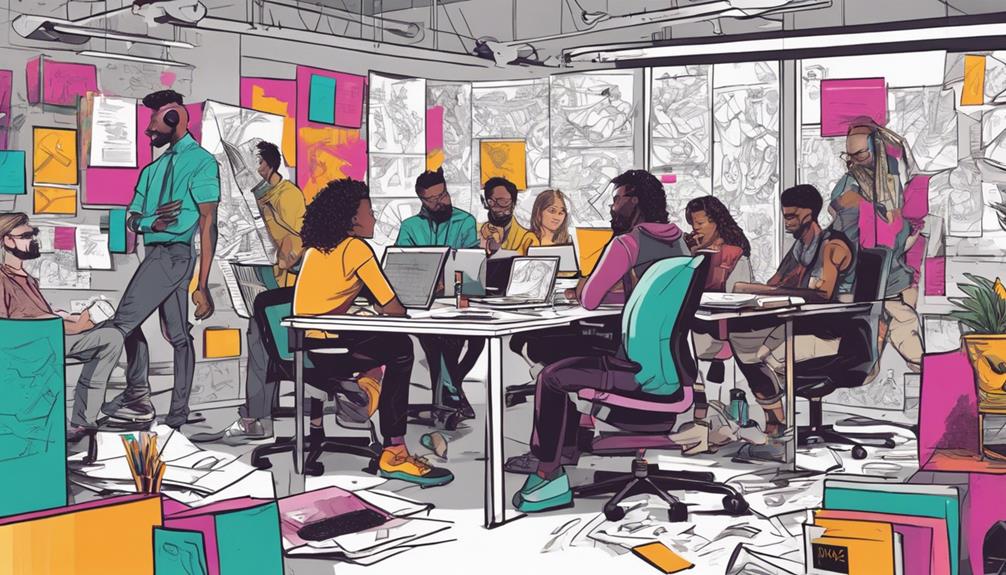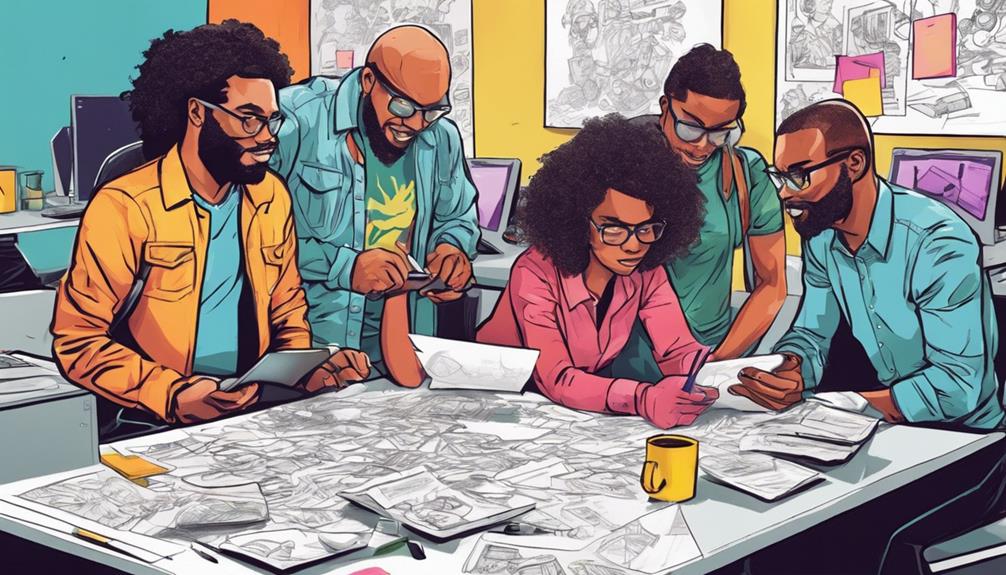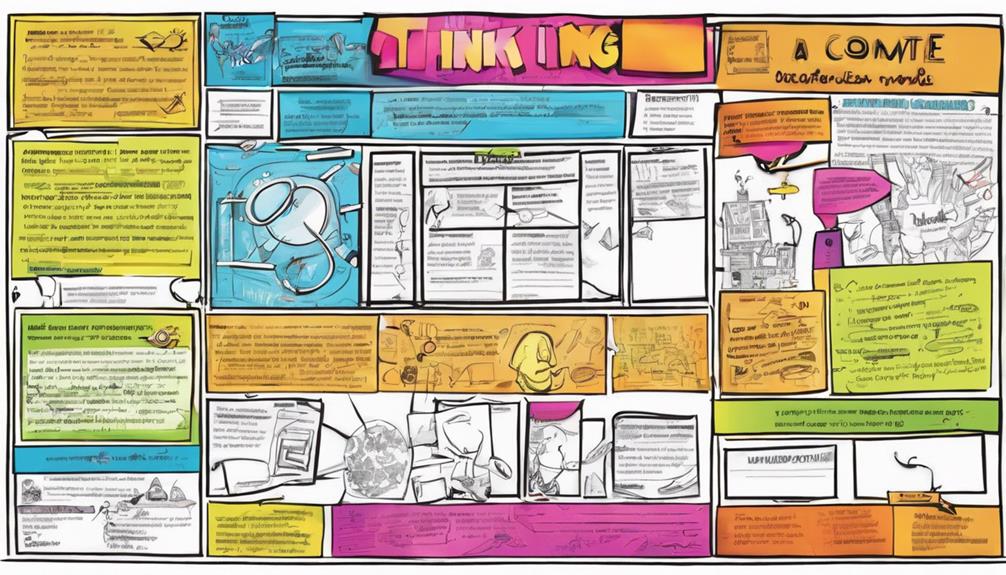Streamline your design process with a structured template that boosts collaboration and guides each stage clearly. Simplify problem-solving and focus with this efficient tool. Master key design thinking stages, from empathizing to testing, for success. Enhance collaboration, problem-solving, and creativity effortlessly. Start your design journey today with a template that guarantees a coherent and effective process. Further insights await on leveraging design tools and creating a design-centric culture for maximum impact.
Key Takeaways
- Provides a structured framework for design stages.
- Guides teams through problem-solving steps.
- Enhances collaboration and creativity.
- Simplifies the design process flow.
- Aids in visualizing user experiences.
Benefits of Design Thinking Template
Design thinking templates offer a structured framework that enhances the problem-solving process and fosters innovation. One significant benefit lies in how these templates guide teams to empathize with users at the beginning stages.
By focusing on user needs during the Empathize stage, teams can better understand the challenges and desires of the people they're designing for. Design thinking tools integrated into the templates facilitate brainstorming sessions where diverse ideas can flourish.
Visualizing the user experience becomes more accessible through these templates, allowing teams to create solutions that truly resonate with their target audience. By providing a clear structure and language for collaboration, these templates enhance creativity and decision-making.
Ultimately, utilizing design thinking templates leads to more effective outcomes in product and service development, as teams can navigate the design process with a shared understanding and purpose.
How to Use Design Thinking Template
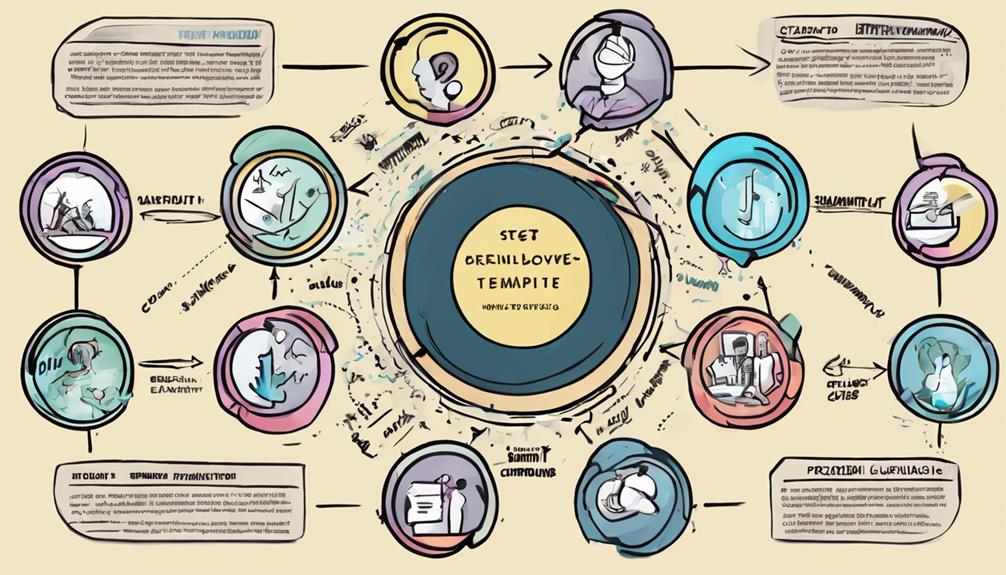
To effectively utilize a Design Thinking Template, begin by understanding the structured framework it provides for guiding you through each stage of the design process. These templates assist in defining the user problem, facilitating a systematic process from ideation to prototyping and testing.
By following the template, you can organize your ideas effectively, ensuring a coherent flow throughout the design process. Utilizing tools and templates within the Design Thinking framework enhances collaboration among team members, fostering efficient brainstorming sessions and idea generation.
Visualizing your progress and tracking key insights becomes more manageable, enabling you to iterate on solutions promptly. Customizability is a key feature of these templates, allowing you to tailor them to fit the specific needs of your project.
Embracing Design Thinking Templates empowers you to approach design challenges in a structured and adaptable manner, optimizing the overall design process.
Mastering Design Thinking Tools
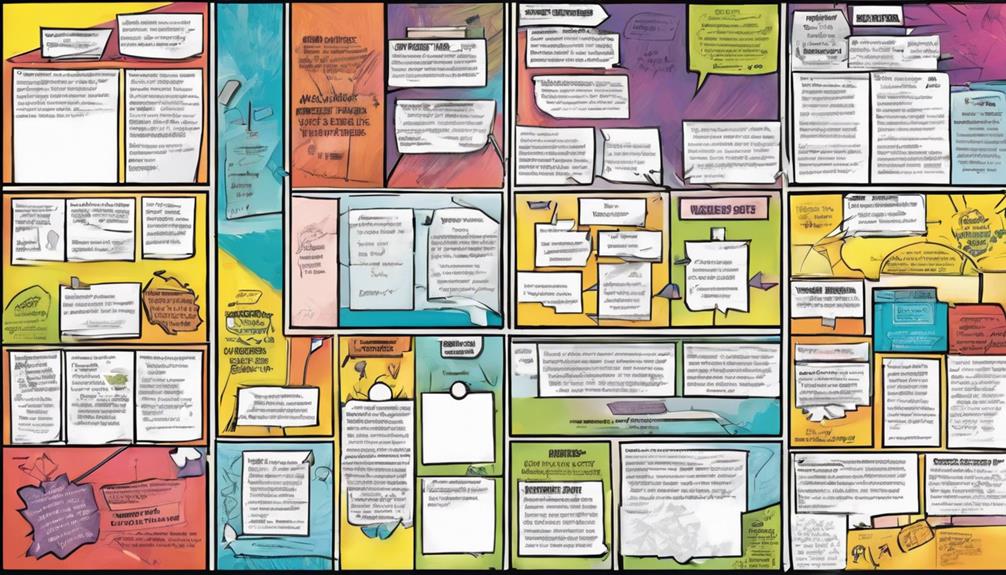
Explore various Design Thinking tools to enhance your problem-solving skills and foster creativity in each stage of the design process.
In the Empathize stage, tools like user personas, empathy maps, and customer journey maps help you understand users' needs and experiences deeply.
Moving to the Define stage, utilize tools such as affinity diagrams, the 5 Whys method, and crafting effective problem statements to define the core issue at hand.
Transitioning to the Ideate stage, employ tools like mind maps, the Six Thinking Hats technique, and group brainstorming sessions to generate a wide range of innovative ideas.
Finally, in the Prototype stage, leverage tools such as storyboards, UI mockups, and prototypes to bring your ideas to life and test them with users.
Mastering these Design Thinking tools will empower you to navigate each stage of the design process effectively, leading to well-rounded solutions that address user needs and challenges seamlessly.
Complete Guide to Design Thinking Process

Uncover the step-by-step journey of mastering the complete Design Thinking process from start to finish.
Design Thinking begins with Empathize, where you explore understanding user needs and challenges.
Next, Define involves synthesizing gathered information to define the core problem.
Moving on to Ideate, it's all about brainstorming and generating creative solutions without limitations.
Once ideas are solidified, Prototype comes into play, building tangible representations to test and refine concepts.
The final step, Test, involves gathering feedback from users to iterate and enhance the prototype.
Design Thinking emphasizes a user-centric approach, utilizing tools like empathy maps and prototypes to enhance problem-solving.
Ultimately, the goal of Design Thinking is to drive business changes, improve products/services, and boost competitiveness through innovative solutions.
Building a Design Culture
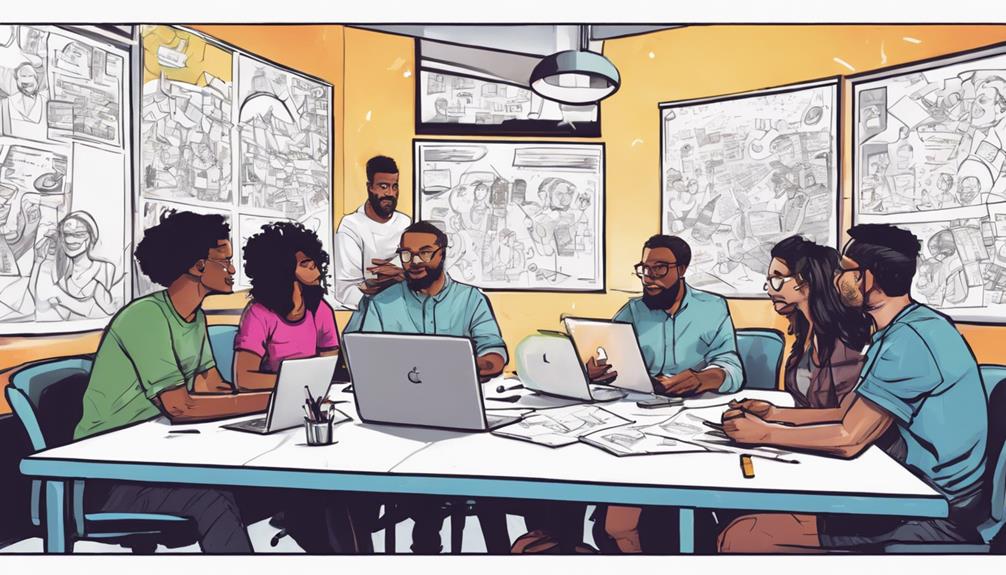
Embrace the transformative power of a design culture within your organization by fostering creativity and innovation. Building a design culture entails implementing design thinking principles, nurturing design teams, and instilling a mindset focused on user needs and continuous improvement. Here's a breakdown of how to cultivate a design culture:
| Design Culture Elements | Description | Importance |
|---|---|---|
| Cross-Functional Collaboration | Encourages diverse perspectives and expertise to work together towards common goals. | Enhances creativity and problem-solving. |
| Open Communication | Facilitates sharing ideas and feedback openly across teams and hierarchies. | Fosters transparency and trust. |
| Experimentation and Learning | Promotes a culture where trying new ideas and learning from failures is encouraged. | Drives innovation and continuous growth. |
| Customer-Centric Mindset | Focuses on understanding and meeting the needs of customers to create valuable solutions. | Ensures products/services align with user expectations. |
| Leadership Support | Demonstrates commitment and provides resources for building a design-centric environment. | Sets the tone for embracing design thinking principles. |
Skills for Successful Design Thinking
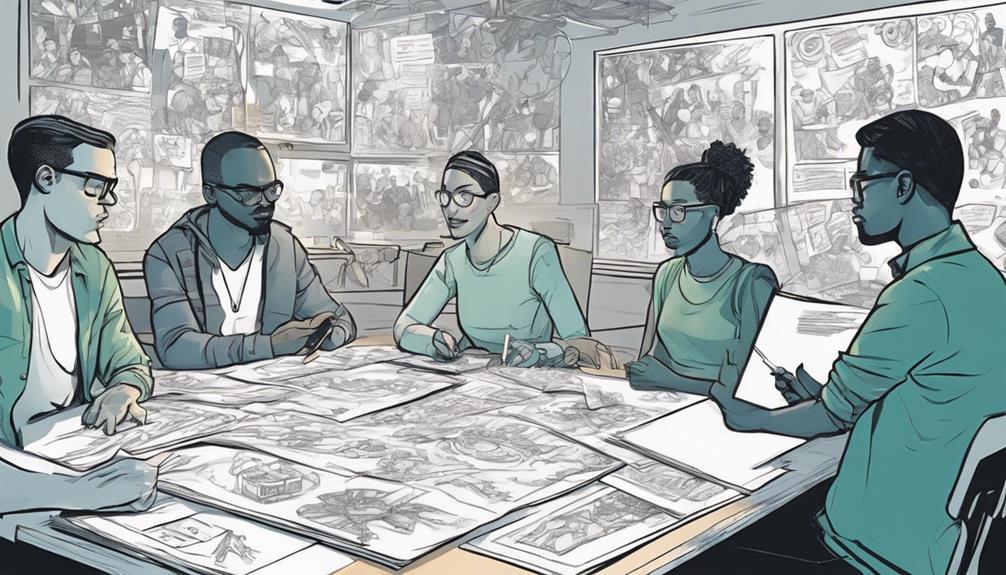
Developing proficiency in essential skills is key to mastering design thinking and achieving successful outcomes in problem-solving and innovation initiatives. Successful design thinking requires a problem-solving approach, empathy, ideating, an iterative process, and understanding of the problems at hand.
To excel in design thinking, you need a blend of creativity, empathy, critical thinking, collaboration, and problem-solving skills. It's essential to be skilled in conducting user research, defining problem statements, ideating innovative solutions, prototyping, and testing ideas. Effective communication and active listening skills are crucial for understanding user needs, fostering team collaboration, and presenting design solutions effectively.
Flexibility and adaptability are necessary traits for navigating the iterative nature of the design thinking process and embracing feedback for continuous improvement. Furthermore, possessing a growth mindset, being open to diverse perspectives, and having a willingness to experiment and learn from failures are key elements to driving successful outcomes in design thinking initiatives.
Overcoming Design Thinking Challenges
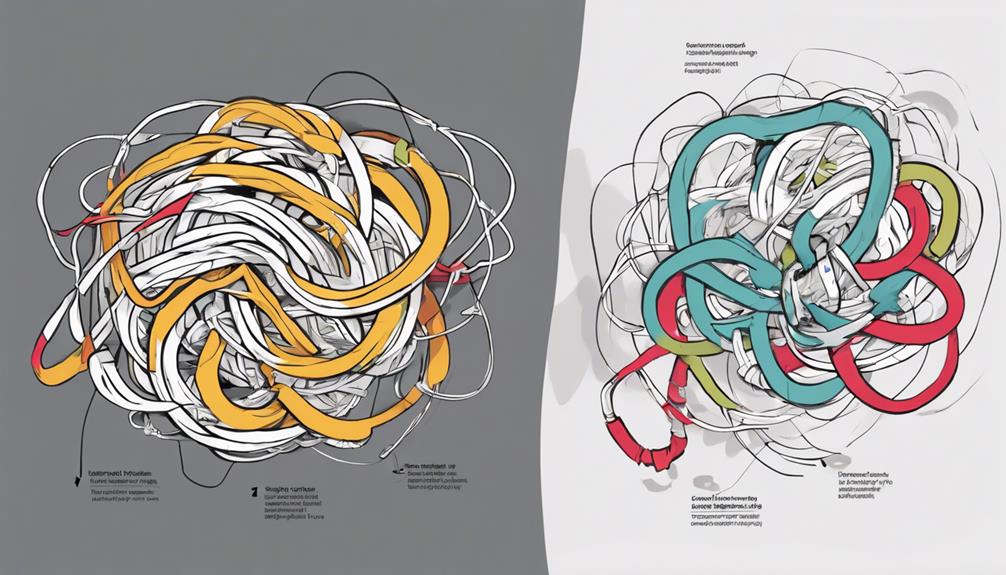
To navigate and conquer the obstacles encountered in design thinking, you can employ strategic problem-solving techniques and effective communication strategies. When facing challenges in design thinking, it's essential to tackle them head-on by utilizing tools and methods that can help you overcome these hurdles efficiently. Addressing the root cause of the issues you encounter is key to finding effective solutions. Additionally, utilizing brainstorming techniques and creating a detailed customer journey map can provide valuable insights throughout the design process.
| Design Thinking Challenges | Strategies to Overcome |
|---|---|
| Ambiguity in problem statements | Utilize the 5 Whys method and Cause and Effect Diagram |
| Collaboration barriers | Employ effective communication strategies and visual brainstorming techniques |
| Refining ideas through testing | Test prototypes with end-user feedback and incorporate alterations based on feedback |
Templates for Design Thinking Stages
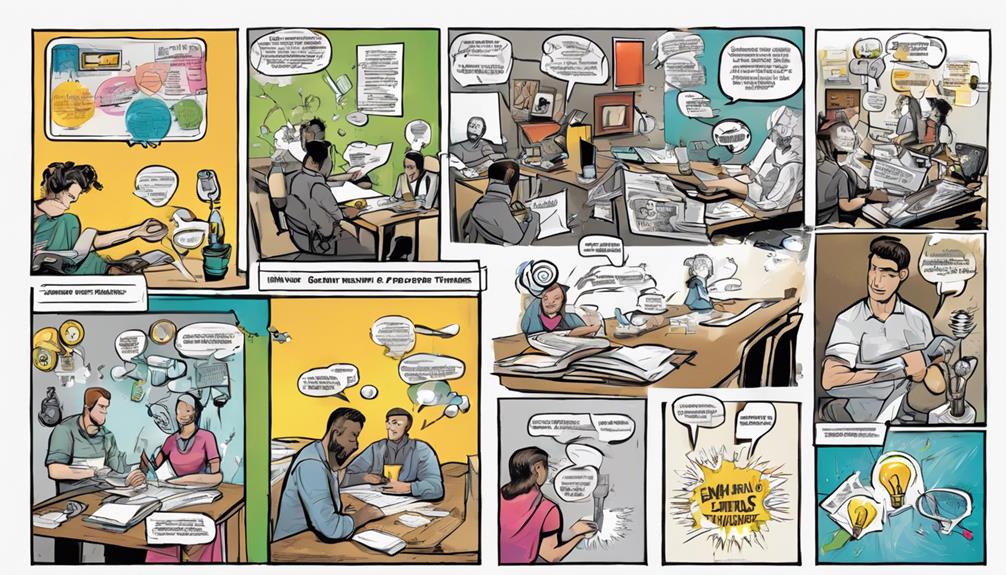
You should know that the points of discussion on Design Thinking Benefits, Implementing Design Tools, and Testing and Evaluation are vital in understanding how templates can enhance each stage of the design thinking process.
By exploring these points, you'll gain insights into how templates can facilitate problem-solving, idea generation, and project outcomes.
Understanding the importance of these aspects will help you grasp the value of utilizing templates in your design thinking endeavors.
Design Thinking Benefits
Design thinking benefits are evident in the utilization of templates for each stage, enhancing problem-solving, creativity, and collaboration. When you leverage design thinking templates, you can:
- Understand Customer Needs:
Templates help in empathizing with users, allowing you to grasp their challenges and motivations effectively.
- Generate Innovative Solutions:
By using templates for ideation, you can brainstorm and develop creative solutions to address customer problems efficiently.
- Enhance User Satisfaction:
Through prototyping and testing templates, you can refine solutions based on user feedback, ensuring higher satisfaction levels.
- Foster Collaboration:
Templates facilitate a structured approach to problem-solving, encouraging team members to work together cohesively towards achieving common goals.
Implementing Design Tools
Utilizing design tools such as templates for the various stages of the design thinking process enhances organization and collaboration among team members. Templates offer a structured framework that aids in problem definition, ideation, and prototyping. These tools help in organizing information, visualizing ideas, and fostering teamwork.
By including sections for problem definition, user research, ideation, prototyping, and testing, templates ensure that each stage is thoroughly addressed. The use of templates promotes consistency, efficiency, and clarity throughout the design thinking process. Additionally, these design tools can be tailored to meet the specific requirements and objectives of a project or organization, making them versatile and adaptable.
Embracing templates not only simplifies the design process but also encourages creativity and innovation within teams. Incorporating these tools into your workflow can significantly enhance the outcomes of your design projects.
Testing and Evaluation
Testing and Evaluation in the design thinking process involves utilizing structured templates to assess the efficacy and user reception of prototypes and proposed solutions. To effectively conduct these assessments, you can leverage various design thinking methods:
- Feedback-Capture-Grid: This template aids in prototype testing by capturing feedback in an organized manner.
- Experience Testing: By enabling real customer interactions, this template evaluates how well prototypes resonate with end-users.
- Solution Interview: Use this template to assess the value and usability of proposed solutions through structured interviews.
- Structured Usability Testing: This template allows for observing and analyzing user interactions with the system to enhance usability.
Additionally, incorporating Testing Sheet templates can provide a systematic approach to defining roles and responsibilities during different testing phases, ensuring a thorough evaluation process in your design thinking journey.
Design Thinking Examples in Practice
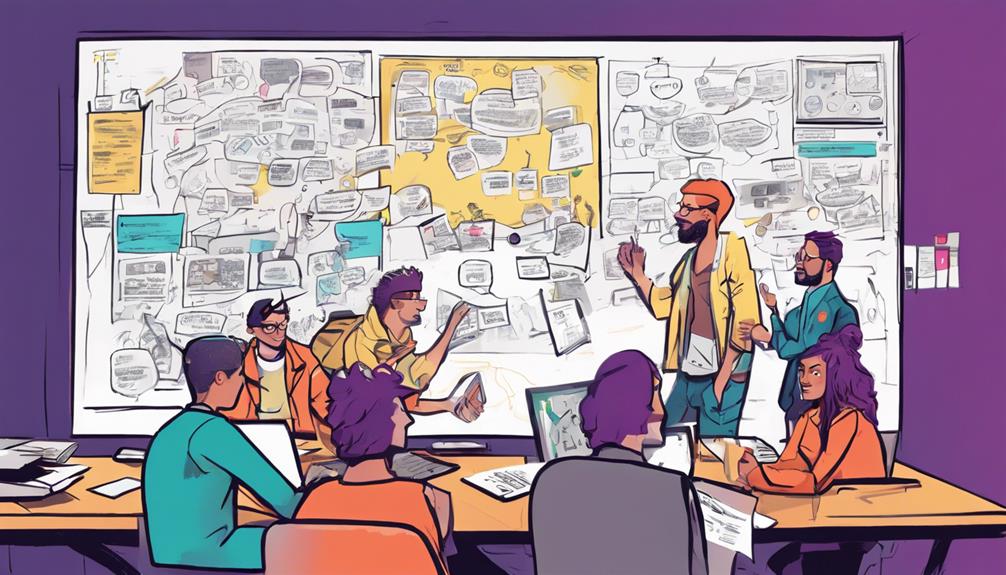
You can gain valuable insights into how companies like Apple, Google, and Airbnb have applied design thinking to revolutionize their products and services.
By exploring real-world case studies from organizations like IDEO and Stanford d.school, you can see practical examples of design thinking in action.
These examples showcase the methodology's impact on creating user-centered solutions and enhancing overall customer experiences.
Real-world Design Thinking
In real-world applications, companies like Apple and Google have demonstrated the effectiveness of design thinking in driving product innovation.
When looking at real-world design thinking examples, consider the following:
- Customer Experience: Companies such as Airbnb and Nike have leveraged design thinking to create products and services that resonate with their target audience, enhancing the overall customer experience.
- User-Centered Design: Through empathy-driven approaches, design thinking guarantees that products are developed with a deep understanding of user needs and preferences, leading to more meaningful solutions.
- Prototyping: Design thinking involves rapid prototyping to visualize ideas, gather feedback, and refine concepts quickly, enabling teams to iterate on designs efficiently.
- Iterative Testing: By continuously testing and refining prototypes with real users, companies can validate assumptions, uncover insights, and make data-driven decisions to improve the final product.
These aspects highlight how real-world applications of design thinking emphasize user-centricity, creativity, and collaborative problem-solving to drive successful outcomes.
Practical Application Insights
Companies across various industries demonstrate the practical application of design thinking through real-world problem-solving and innovation. Design thinking involves empathizing with users, ideating creative solutions, prototyping ideas, and testing prototypes to refine them. By applying design thinking principles, companies like Apple and Airbnb have created user-centric products and services that stand out in the market. Examples of design thinking in action include redesigning customer experiences, improving user interfaces, and enhancing service delivery to meet customer needs effectively.
To illustrate the impact of design thinking in practice, consider the following table showcasing practical applications of design thinking across different industries:
| Industry | Practical Application |
|---|---|
| Technology | Redesigning user interfaces for better usability |
| Healthcare | Improving patient experiences through innovative solutions |
| Retail | Enhancing customer service delivery for increased satisfaction |
| Education | Designing engaging learning platforms using empathy |
| Finance | Streamlining financial processes for user convenience |
These examples highlight how design thinking drives innovative solutions, improves user satisfaction, and provides companies with a competitive edge.
Case Studies Showcase
Case studies exemplify how design thinking principles have revolutionized problem-solving in diverse industries, showcasing the tangible impact of empathy-driven innovation and user-centered design. When delving into case studies, you can gain valuable insights into successful implementation strategies and outcomes:
- Empathy-Driven Innovation:
Case studies highlight how understanding the needs and experiences of users leads to innovative solutions that truly address their pain points.
- User-Centered Design:
By focusing on the end user throughout the design process, case studies demonstrate how products and services become more intuitive and effective.
- Impactful Solutions:
Successful case studies show how design thinking can generate solutions that make a significant difference in solving complex problems within various industries.
- Successful Implementation Strategies:
Analyzing case studies allows you to see the strategies and methodologies that have been effectively used to implement design thinking and achieve successful outcomes.
Frequently Asked Questions
What Is the Design Thinking Process Simplified?
To simplify the design thinking process, you focus on empathizing with users, defining challenges, ideating creative solutions, prototyping ideas, and testing them. This human-centric approach fosters innovation through iterative cycles of refinement.
How Do You Write a Design Thinking Process?
To write a design thinking process, start by defining user needs. Use tools like Design Principles and Customer Journey Maps. Interview users for insights, ideate innovative solutions, prototype, and test with users. Refine based on feedback.
What Are the 5 Steps in the Design Thinking Process?
To nail the design thinking process, remember the 5 key steps: Empathize, Define, Ideate, Prototype, and Test. Immerse yourself in the user's world, define the problem, brainstorm solutions, create prototypes, and test them for feedback.
What Is the Design Thinking Template?
The design thinking template is a structured framework that guides teams through understanding user needs, defining problems, ideating solutions, prototyping ideas, and testing them. It provides a clear roadmap for creating innovative and human-centered products or services.
Conclusion
So, now that you have the tools and resources to simplify your design thinking process, what're you waiting for?
Engage and start creating innovative solutions that truly resonate with your audience.
Remember, design thinking is all about putting the user at the center of your process and embracing a culture of creativity and collaboration.
Let's revolutionize the way we approach problem-solving together!
